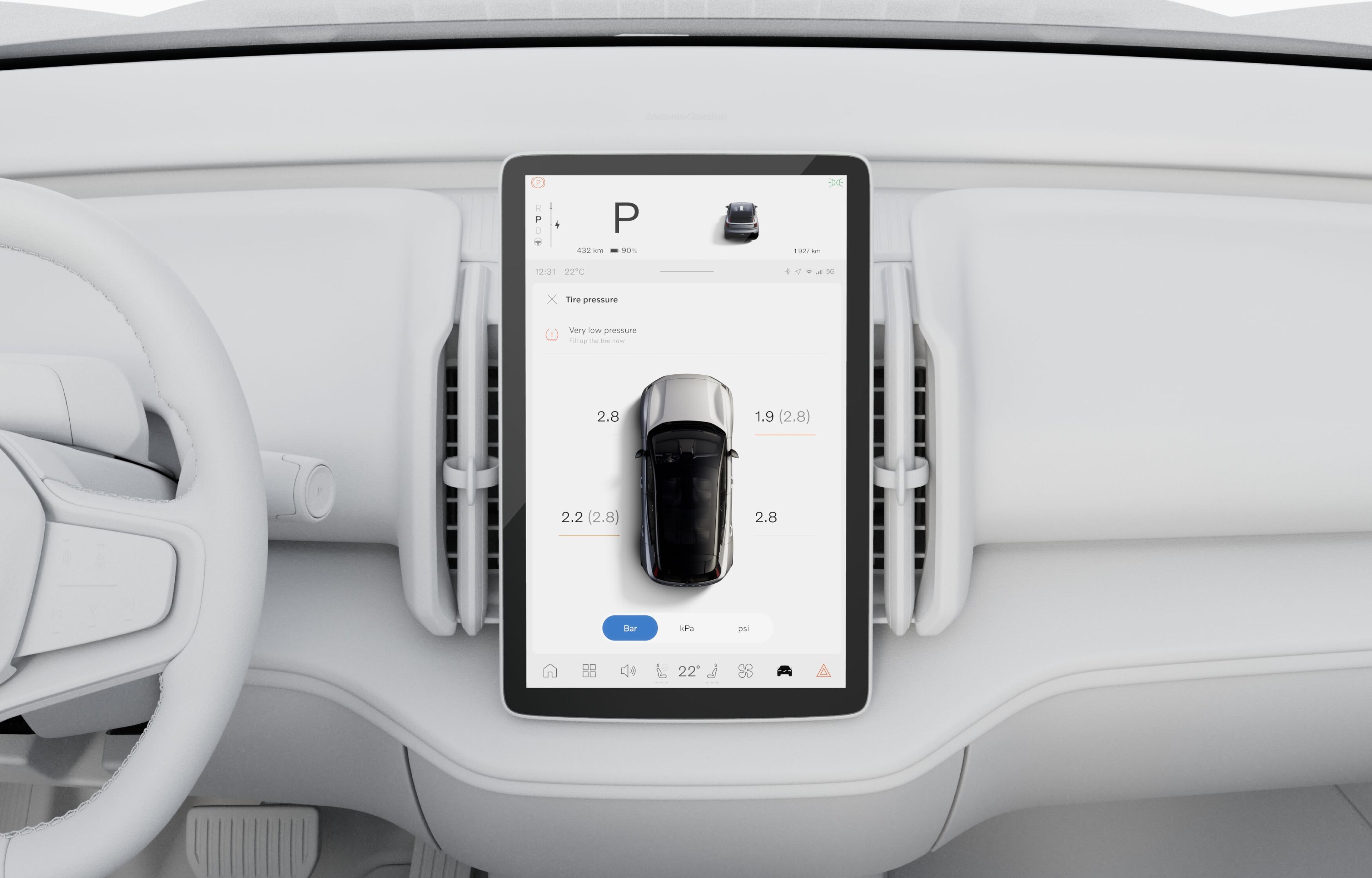How to check tire pressure
Discover how to check the tire pressure on your Volvo car. Find tips and tricks on how to avoid a low PSI and extend your tires' lifespan.

It’s important to maintain proper tire pressure.
As a proud Volvo car owner, ensuring your car’s optimal performance and safety is undoubtedly a top priority. While regular maintenance is crucial for all aspects of your Volvo car's performance, one area that should never be overlooked is the tire pressure.
This article will explore the importance of regularly checking your tire pressure, the advantages of having a Tire Pressure Monitoring System (TPMS), and how to use a tire pressure gauge effectively. By understanding the significance of maintaining proper tire pressure, you can enhance your driving experience, and prolong the life of your Volvo car's tires.
The TPMS uses sensors to provide real-time information about your tire pressure, alerting you to any deviations from the recommended levels.
The significance of tire pressure
Maintaining the correct tire pressure is of paramount importance for several reasons. Firstly, adequate tire pressure ensures optimal handling and stability, improving your car’s overall performance.
Secondly, proper tire pressure enhances fuel efficiency, which can save you money at the gas station and help reducing environmental impact.
Lastly, maintaining the right pressure helps prevent premature and uneven tire wear, which affects performance and can compromise your safety on the road.
What is considered low tire pressure?
The recommended tire pressure for your car can be found in your owner’s manual, on a sticker on the driver’s side door jamb, or online. Tire pressure is measured in pounds per square inch (PSI), and if it’s lower than the recommended PSI, it is considered low tire pressure.
The benefits of a Tire Pressure Monitoring System (TPMS)

With TPMS, it’s easier to keep track of the pressure of your tires.
Volvo cars are equipped with a sophisticated Tire Pressure Monitoring System (TPMS) that continuously monitors the pressure of all four tires.
The TPMS uses sensors to provide real-time information about your tire pressure, alerting you to any deviations from the recommended levels.
This advanced system ensures that you have accurate and immediate feedback, allowing you to take prompt action and maintain optimal tire pressure. By utilizing the TPMS, you can proactively address any pressure fluctuations and minimize the risk of accidents or tire damage due to underinflation or overinflation.
What is a tire pressure gauge?
You will need a tire pressure gauge to manually check your tire pressure. This is a tool that measures the air pressure inside your tire. There are two types of tire pressure gauges: digital and analog. Both types are equally accurate, but digital gauges are easier to read.
Using a tire pressure gauge: A step-by-step guide
While the TPMS is invaluable, having a reliable tire pressure gauge on hand is, as mentioned, essential for occasional manual checks. Here is a step-by-step guide on how to use a tire pressure gauge effectively:
- Park your car on a level surface and ensure the tires are cool.
- Retrieve your tire pressure gauge and remove the valve cap from one tire.
- Firmly press the gauge onto the valve stem until you hear a slight hiss of air.
- The gauge will provide a reading of the tire pressure. Take note of the number.
- Repeat the process for each tire, including the spare, if applicable.
- Compare the readings to the recommended tire pressure stated in your Volvo owner's manual.
- If the readings are below or above the recommended levels, adjust the pressure accordingly using an air compressor or letting air out.
- Replace the valve caps securely once the correct pressure is achieved.
Regular tire pressure checks: A key to optimal performance
To maintain optimal performance and safety, checking your Volvo car's tire pressure regularly is vital. Here are some key suggestions for establishing an effective tire pressure maintenance routine:
- Schedule Routine Checks: Aim to check your tire pressure at least once a month or before embarking on long journeys.
- Pay Attention to Temperature Changes: Extreme weather conditions can impact tire pressure. Monitor pressure more frequently during temperature fluctuations.
- Inspect Your Tires: Check the pressure for signs of uneven wear, punctures or other damage. Address any issues promptly.
- Follow Manufacturer Recommendations: Consult your Volvo owner's manual for the recommended tire pressure values. Adhering to these guidelines will optimize performance and safety.
- Invest in Quality Tire Pressure Gauge: A reliable and accurate tire pressure gauge is a worthwhile investment for regular manual checks.
How to identify a puncture
Tire punctures are a relatively common problem for drivers. A puncture can be caused by various factors, including driving over a nail or other sharp object. To identify a puncture, you may notice one or more of the following:
- A sudden loss of tire pressure
- A hissing sound from the tire
- A visible puncture in the tire
- A vibration or wobbling sensation while driving
How to fix a tire puncture
If you have a punctured tire, you need to have it repaired or replaced. We recommend booking a service with a Volvo Professional for a tire replacement. By doing so, you can be sure you get help from someone who knows your car and ensures that your tire is either repaired or replaced with a new one.
Maintaining safety and extending tire lifespan
By monitoring and maintaining proper tire pressure, you can help support the safety of yourself, your passengers, and other road users. Adequate pressure reduces the risk of accidents, enhances stability, and enables optimal braking and handling.
Additionally, avoiding underinflation or overinflation minimizes the likelihood of tire blowouts and increases the lifespan of your Volvo car's tires. This improves your driving experience and helps save on replacement costs. Stay proactive, stay safe, and enjoy the journey in your Volvo car.